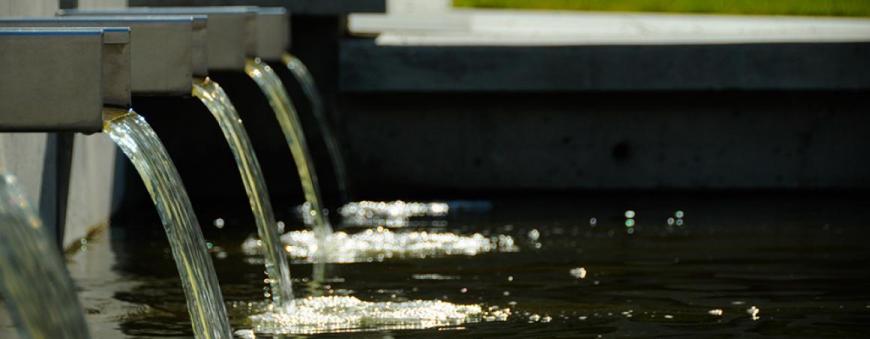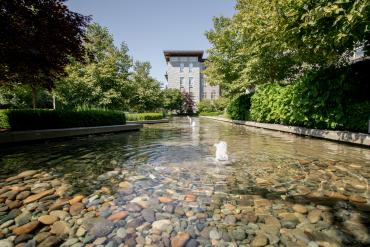Download the Integrated Stormwater Management Plan
Overview
Stormwater management is required for all new development projects on the UBC campus. Stormwater management includes any new building, road or landscape intervention designed to reduce the quantity of water that would otherwise flow off of built surfaces, in order to slow the rate and amount of stormwater that leaves the campus.
The Integrated Stormwater Mangement Plan (ISMP) was finalized in 2017 and is guided by the performance requirements for stormwater management in the Vancouver Campus Plan, Technical Guidelines, Neighbourhood Plans and the Green Building Action Plan. Additionally, there are a number of requirements based on certain certification standards, such as LEED or SITES. The ISMP is in active use and is being used to inform building and neighbourhood development.
Campus and Community Planning has two roles in implementing stormwater management:
- To work with university stakeholders to establish policy and performance requirements that provide environmental, social and risk mitigation benefits that work for everyone.
- Regulate and ensure that new developments (buildings, parks, roadworks, etc) include rainwater management facilities.
Goals of the Plan
As climate change and development add additional rainwater to manage on the campus, it is important that this water is controlled and not allowed to to do damage. Some of the water is to be returned to the ground to support the local biome, some will be used for new purposes and some will be controlled so that flooding is minimized.
The three goals of the Integrated Stormwater Management Plan are to:
- Reduce the flow of water off-campus;
- Reduce the impacts of stormwater flows off-campus; and
- Maintain or enhance water quality at campus boundaries so that it meets or exceeds municipal best practices.
The ISMP also intends to address many identified stormwater-related concerns, including cliff erosion and poor water quality where storm sewers empty into the ocean. It also ensures that stormwater features will be incorporated into the future planning of the campus to mitigate any impacts on water flows and quality.
Campus and Neighbourhood Scale Stormwater Interventions
On the larger campus scale, there are constructed and planned stormwater detention facilities that are intended to reduce the flow rate of stormwater leaving the campus. These include:
- Large buried tanks that hold back flooding rainwater,
- Surface level dry ponds that only flood during outlying storm events, and
- Bioswales and rain gardens that assist in absorbing rainwater and reduce the volume of water that leaves the campus.
UBC sits on a dramatic cliff top location. We work to ensure that overland flooding does not go over cliff edges that would erode the sandy cliffs and damage the land along the campus edges. We are restricted from infiltrating too much water into the ground in order to ensure that the groundwater table does not accelerate cliff erosion. We work with our neighbours to ensure that we are all protected from uncontrolled rainwater.
As development continues on campus, stormwater interventions are developed as part of larger neighbourhood planning. It can be as simple as rain gardens to manage sidewalk drainage to as sophisticated as green roofs to intercept rainwater before it reaches the ground.
Building Scale Stormwater Interventions
Buildings are one of the main sources of stormwater on the campus and their reductions in contributions to the stormwater system help reduce the growth of our infrastructure while providing for less severe impacts during outlying events.
UBC is pursuing various interventions that are appropriate for our current and future climate. Dry ponds, rain gardens, water reuse, detention tanks, soft landscape and other tools are applied to new building design to help manage the effect of stormwater
The rain garden at Orchard Commons, the green roof at the Beatty Museum and water reuse in CIRS are all examples of technologies and practices that help manage rainwater at a building scale.

